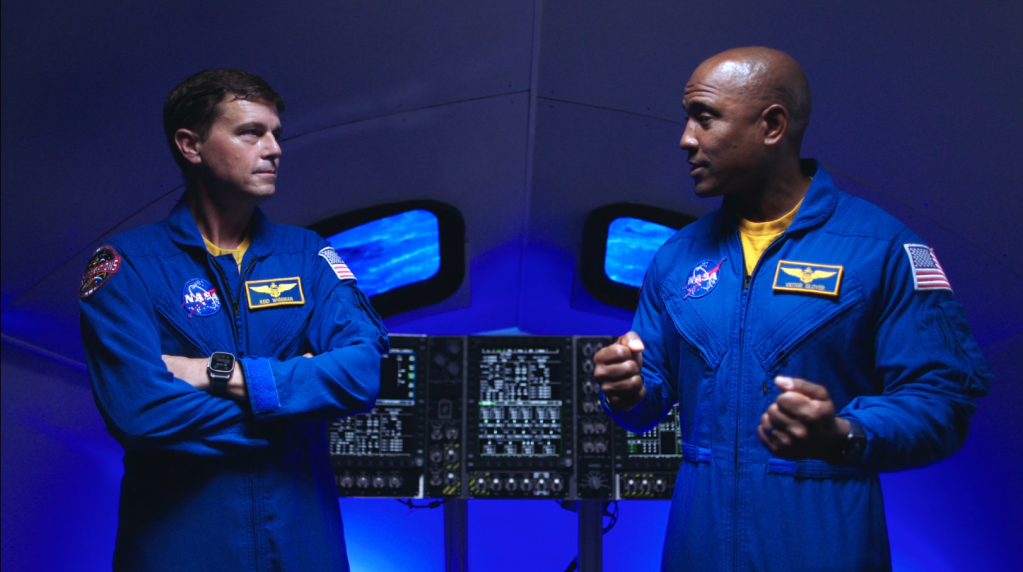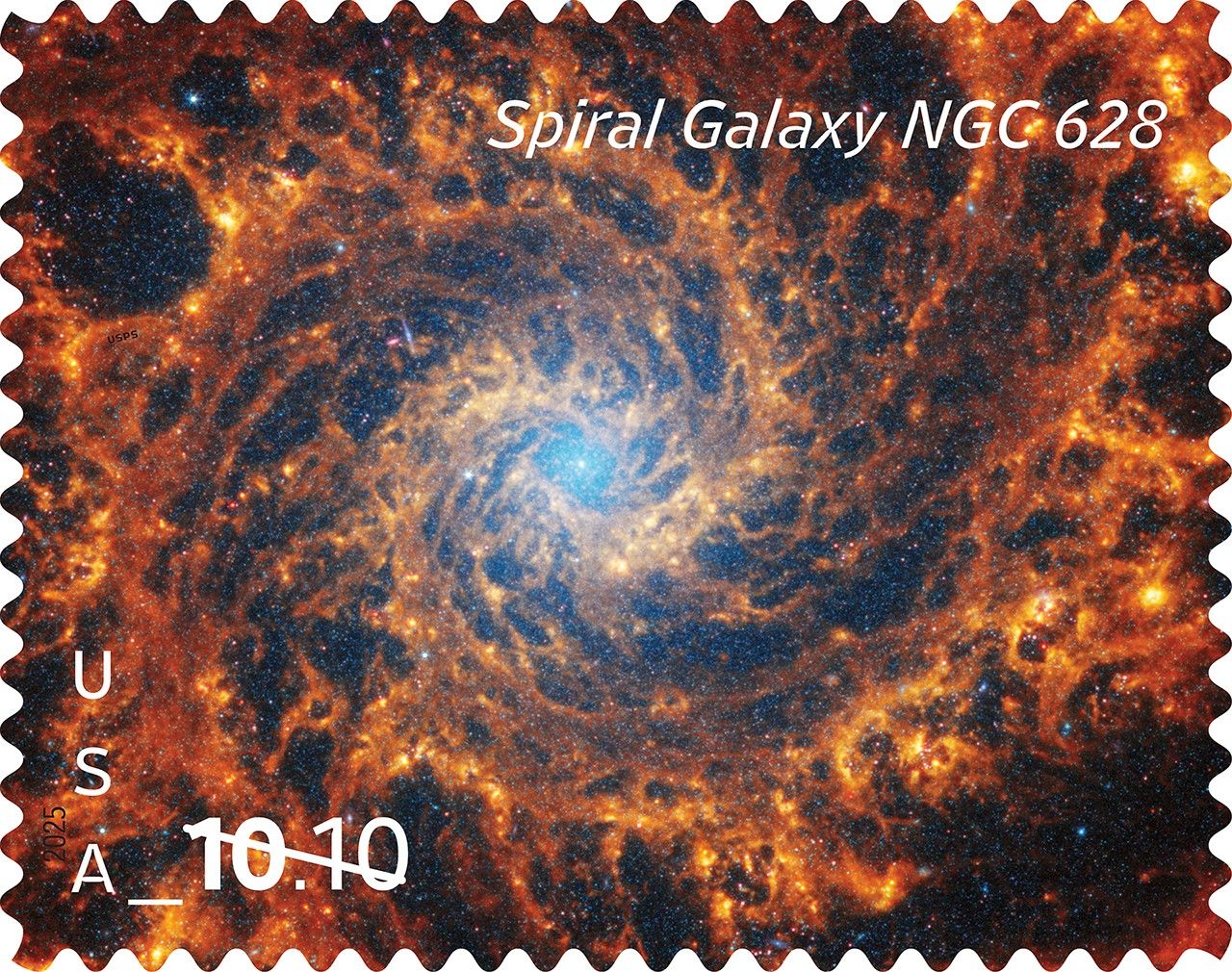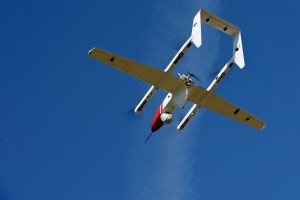Check the Dream with Us page to see information on the latest challenge.
Dates
March 1, 2023–May 31, 2023
*SUBMISSION DATE EXTENDED
Submissions accepted starting March 1, 2023, through May 31, 2023. Submission link: https://stemgateway.nasa.gov/public/s/course-offering/a0B3d000000zjNv/dream-with-us-2023-design-challenge
Save the Date
Virtual Ceremony—June 15, 2023 at 7:00pm EST
Are you looking for extra support or are you interested in learning more about the Dream with Us Design Challenge? Join the Dream with Us team on Wednesday April 12th at 6pm EST team for a one-hour virtual check-in where you can ask questions, find out more about available resources, and meet fellow educators also participating.
Register here: https://stemgateway.nasa.gov/public/s/course-offering/a0B3d0000017N6Z/dream-with-us-challenge-midpoint-checkin?fbclid=IwAR2s6RzNtc37xkz_Z1hiLg46vxHRd1W16umauPEc5mxNKXNAl2-rk4BRU6Y
Having trouble with registration? No problem! Join us on Teams directly:
Join on your computer, mobile app or room device
Click here to join the meeting
Meeting ID: 281 288 756 592
Passcode: ANhyDu
Call-in (audio only): +1 256-715-9946, 467860049#
Challenge Description
Students ages 13-18, come dream with NASA Aeronautics and help us envision and market a more sustainable commercial aircraft. Put together your dream team of 2-4 participants and build a marketing plan to help convince a team of NASA experts that your design for a 737-style commercial aircraft should be chosen as the best sustainable design. Access STEM activities and resources that can be used to help you and your team create your project. If selected, your team will have a NASA expert visit you at your school* to share how they contribute to current aeronautics challenges including sustainability. Selected designs may also be shared on our social media platforms and more.
*NASA expert visit may be in-person or virtual depending on scheduling and availability.
Ages
For students ages 13–18
Downloadable Design Challenge Resource Packet
Design Challenge Rules
NASA’s Dream With Us Challenge Rules
The Dream with Us Challenge opens March 1, 2023. The submission period begins March 1, 2023, and concludes on May 15, 2023, at 11:59 pm EDT. Schools, organizations, and community groups should communicate to parents and guardians that submissions are limited to one entry per team. Entries must be submitted through the design challenge web portal: https://stemgateway.nasa.gov/public/s/course-offering/a0B3d000000zjNv/dream-with-us-2023-design-challenge. If you are an educator who would like to submit a team’s entry, you may do so.
A virtual awards ceremony will be scheduled prior to the public announcement of selected projects and all participants will be invited to attend using the email provided during registration. Selected designs will be announced on this site no later than June 1, 2023. Again, thank you for participating in the Dream with Us Challenge!
Eligibility
The contest is open to all children in grades 6-12 who are attending public, private, parochial, and home schools in the United States of America and children of U.S. military members stationed overseas. There will be two separate judging categories: one for participants ages 13 to 15 and one for participants ages 16 to 18.
Submission Requirements
- All submissions must be the original work of the student teams.
- Students must be currently enrolled in grades 6 – 12.
- The challenge is limited to one entry per team.
- Challenge submissions can be:
- Commercial
- Infomercial
- Brochure
- Website
- Radio ad
- Other
- Regardless of how you choose to communicate your idea, you must include a marketing plan that sells your aircraft to NASA experts.
- Marketing plan must include:
- Image of the new aircraft with an N-Number, a logo, and paint scheme
- Energy consumption data (current design vs. new design)
- Design balance: energy usage (sustainability vs. economy vs. flight enjoyment)
- Environmental impact from multiple aspects (ex. humans, animals, plants, etc.)
- BONUS: explain synergistic technologies (show the advantages and disadvantages of elements of the new aircraft, point out how different parts of the design work together and/or conflict with one another)
Submitting Entries
- Each entry must include a signed submission form completed by a parent or legal guardian for each student. If a teacher is submitting a team’s artwork, the submission must include the signed forms for each student with the entry.
- Artwork should be submitted as a high-resolution image of the student’s original artwork and must be submitted in .jpg or .png format (minimum of 2,400 pixels on the longest edge).
- When submitting written work, including any presentations, it should be typed and submitted as a PDF. PDFs are limited to 10 MB.
- Any videos or other media besides artwork or written work need to be uploaded to YouTube with a “watch URL” link shared during submission.
Judging and Criteria
- Contest officials will select the top submissions and present them to a panel of NASA judges. Judges will make selections based on the above-mentioned criteria to determine which projects will be recognized.
- The following criteria will be used to evaluate each entry:
- Communication
- How well does the team communicate their marketing plan?
- Are enough details provided to understand the team’s message?
- Impact
- Does the entry impact the target goal of sustainable aviation?
- Does the submission provide details identifying how the concept directly provides a benefit?
- Does the submission develop a logical and workable solution and approach to solving the problem?
- Practicality
- Has the team provided details that identify how the improvements, changes, and/or related activities can be implemented in a practical manner?
- Does the submission utilize existing technology or identify technology required to implement the solution?
- Originality
- To what extent is this concept new, or in what way is this an innovation on an existing idea?
- How is this concept unique?
- Communication
Important Note
All factors are important and will be considered in the evaluation process.
Recognition
- All participants will receive a code that allows them to earn an “endorsement stamp” in the NASA Aeronautics Flight Log, which is available at https://www.nasa.gov/flightlog/. In addition, select projects will be chosen to be highlighted and showcased through NASA social media, on our website, and in other locations as appropriate. Certificates and other recognition for select projects will also be made available.
- A virtual awards ceremony will be scheduled prior to the public announcement of selected projects and all participants will be invited to attend using the email provided during registration. Selected designs will be announced on this site no later than June 1st, 2023. Again, thank you for participating in the Dream with Us Challenge!
Save the Date
Upcoming events for the Dream With Us Design Challenge. Check back often for more details coming soon.
- Education Professional Development session
- Dream With Us Challenge Check-In
- Wednesday, April 12th, 2023 @ 6 pm EST.
- Virtual Recognition Ceremony
- Thursday, June 1st, 2023 @ 7:30 pm EST
Resources
The following section contains resources that can be used to help complete the design challenge. There are resources for students as well as educator resources that can be used to help guide teams as they design their aircraft. Other resources can also be used and can be found through independent research about this topic. In addition, the major factors that NASA experts focus on that influence an aircraft’s performance, fuel efficiency, and overall environmental sustainability can be found below. These factors, a brief explanation of these factors, and links to find out more are also included.
Aeronautics Sustainability Factors
WEIGHT
Advanced composite materials
Composite materials are made up of two or more materials with dissimilar properties and are designed to take advantage of the properties of the materials that make them up. Advanced composite materials are a specific type of composite material made by combining reinforcing materials, like carbon fibers or fiberglass, with a resin. Advanced composite materials are used extensively in aircraft because they are very strong even though they are lightweight.
https://www.nasa.gov/aeroresearch/programs/aavp/ac
Tow steered composites structures
Traditionally, fibers in composite materials have been aligned in a singular direction within each layer. New techniques have made it possible to engineers to vary the alignment of fibers within a layer. Aligning the fibers in a curvilinear fashion can improve structural efficiency, lowering the weight because less material is required.
https://ntrs.nasa.gov/api/citations/20180006190/downloads/20180006190.pdf
Damage arresting stitched composite structures
In many composite materials, fibers are located within individual layers. While the layers are very strong, delamination can occur. Delamination is when the material fails due to the layers separating. One way to combat this problem is through stitching. Stitching is a technique where fibers are woven through the layers, providing additional strength, and helping reduce the risk of delamination.
http://www.tc.faa.gov/its/worldpac/techrpt/ar02-111.pdf
Aircraft Configuration Technologies
Truss-braced wing configuration
One potential way to increase the fuel efficiency of airplanes is to use thinner wings. For thinner wings to produce enough lift, more airflow over the wing is required. One way to increase airflow is to increase the length of the wings. The truss-braced configuration is designed to provide the additional support required for longer wings.
https://ntrs.nasa.gov/api/citations/20140011160/downloads/20140011160.pdf
Hybrid wing body configuration
A hybrid wing body, also called a blended wing body, is an airplane where the body and wing are combined. Some examples of this design are NASA’s X-48 airplane and the B-2.
https://www.nasa.gov/centers/langley/news/factsheets/FS-2003-11-81-LaRC.html
Box wing configuration
In a box wing configuration, an airplane’s front wing is mounted on the lower part of the plane. This wing is then joined at the tips to a rear wing mounted on top of the plane.
https://www.nasa.gov/content/boxed-wing-reduces-drag
Over the wing nacelle (OWN) configuration
In a jet engine, the nacelle is the cylindrical housing that surrounds and protects the engine. An airplane using an OWN configuration would have the engine mounted above the wing rather than under it like in most current passenger airplanes. This can reduce aircraft noise for people on the ground because the wing effectively shields the engine’s noise.
https://ntts-prod.s3.amazonaws.com/t2p/prod/t2media/tops/pdf/LAR-TOPS-70.pdf
Swing wing configuration
Airplanes designed with a swing wing or variable wing configuration have wings that can move while in flight, improving their efficiency as needed, An airplane could fully extend its wings to reduce both its take off speed and the length of the runway needed, and then during cruise the wings could be swept back, reducing drag and increasing the aircraft’s speed.
https://www.nasa.gov/wp-content/uploads/2021/09/121583main_FS-081-DFRC.pdf?emrc=a3bfdb
Twin fuselage configuration
The fuselage is the “body” of the airplane. In a twin fuselage configuration, an airplane would have two separate fuselages.
https://www.nasa.gov/centers/armstrong/news/X-Press/twin-fuselage-towed-glider.html
Double-bubble configuration
The double-bubble configuration is a much wider fuselage compared to traditional passenger aircraft. This increases the passenger carrying capacity of the airplane. At the same time, the fuselage can generate lift, decreasing the size of the wings required to fly the plane.
https://www.nasa.gov/content/the-double-bubble-d8-0
Aerodynamics
SMART Vortex Generators
These small, fin-like components on an airplane’s exterior help improve the aerodynamic performance by guiding airflow around it. Shape-memory alloys mixed with various metals are being tested in their ability to change shape based on temperature and enable vortex generators to extend or fold down to help improve an airplane’s performance during various phases of flight.
https://www.nasa.gov/aeroresearch/nasa-looks-for-a-new-twist-on-sustainable-aviation
Ultra-thin wings
Thinner wings reduce drag on an aircraft due to less friction between the airflow and the wing’s thickness. Less drag on an aircraft decreases fuel consumption.
https://www.nasa.gov/aeroresearch/wind-tunnel-testing-of-a-new-wing-design
Active flow control (AFC)
Allows the pilot to control the aircraft’s aerodynamic flow field with the ability to turn it off and on, as needed, saving energy, reducing mechanical parts, thus reducing weight and drag on the aircraft.
https://technology.nasa.gov/patent/LAR-TOPS-340
Natural laminar flow (NLF)
Laminar flow is the way airflow travels above and below the wing surface of an aircraft. Using an airfoil shape encourages laminar flow to reach further than conventional shapes allowing for a smoother flying performance reducing drag and fuel consumption.
https://ntrs.nasa.gov/api/citations/19810010484/downloads/19810010484.pdf
https://blogs.nasa.gov/armstrong/2011/02/11/post_1296777084480/#:~:text=Laminar%20flow%20is%20essentially%20the,of%20their%20shape%20and%20size
High-aspect ratio wings
The aspect ratio is the slenderness of a wing from tip to tip. Wings with a higher aspect ratio usually have longer wing spans allowing for lower drag and a slightly higher lift.
https://www.grc.nasa.gov/www/k-12/VirtualAero/BottleRocket/airplane/geom.html
Propulsion Efficiency
Electric aircraft propulsion (EAP)
This type of aircraft features electric-powered propulsion, which is aimed at reducing fuel usage. These planes will be quieter, safer, and more environmentally friendly than traditional aircraft.
https://www1.grc.nasa.gov/aeronautics/eap/
Hybrid EAP
An aircraft that uses both fuel and electric power for flight allowing for reduced fuel and energy consumption. The electric battery is replenished by the power boost during the aircraft’s take off and climb allowing sufficient electric power for cruising.
https://www1.grc.nasa.gov/aeronautics/eap/airplane-concepts/hybrid-electric/
Sustainable aviation fuels (SAFs)
Fuel made from renewable biomass and waste resources with the ability to power an aircraft similar to petroleum-based jet fuel but with less greenhouse gas emissions.
https://www.energy.gov/eere/bioenergy/sustainable-aviation-fuels
Renewable fuels
Using renewable fuels such as liquid hydrogen or ammonia may prove to be an effective way to reduce airplane engine emissions in the future.
https://www.nasa.gov/aeroresearch/university-researchers-moving-electrified-aviation-forward-with-nasa
Boundary layer ingestion (BLI)
The boundary layer is the layer of slow moving airflow that develops along an aircraft’s surfaces. By positioning a jet engine’s inlet and fan at the back of an aircraft, the slower moving air flow air is ingested by the engines to generate thrust. This helps the engines not work as hard which reduces fuel consumption and improves the overall efficiency of the aircraft.
https://www1.grc.nasa.gov/aeronautics/bli/
Student / Team Activities
Attack of the Drones Coding Activity
NEW ACTIVITIES:
Weighed Down
Elementary (Coming Soon) | Middle School and High School
Using Airplane Space Efficiently
Elementary (Coming Soon) | Middle School and High School
Prioritize Your Flight
Elementary (Coming Soon) | Middle School | High School | AX Pre Activity Pros and Cons
Name That Plane
Elementary | Middle School and High School
Lifecycle of Energy
Elementary (Coming Soon) | Middle School | High School
Educator Resources
Are you looking for ideas on where to start with your students? The following links provide many resources about NASA, and aeronautics. Some STEM activities are also included.
Quesst Supersonic STEM Toolkit
Sustainable Aviation STEM Toolkit
Advanced Air Mobility (AAM) STEM Learning Module
Topic Resources
The following resources are included to help guide you through the design challenge and NASA Aeronautics’ focus on environmental sustainability.
NASA’s Sustainable Flight National Partnership
NASA’s Transformative Aeronautics Concept Program
ICAO/UN Aviation Emissions Calculator(shows fuel burn and carbon emissions per passenger, per journey)
Aviation Emission Reduction Innovations Tracker (click on the Technology tracker that includes NASA’s Electrified Flight Powertrain Demonstration – each project is a link)
International Air Transport Association Aircraft Technology Roadmap (great charts on pp. 10, 13, provides choices of technologies to apply and impact)
Video Resources
NASA’s Advanced Air Mobility Playbook Series

































